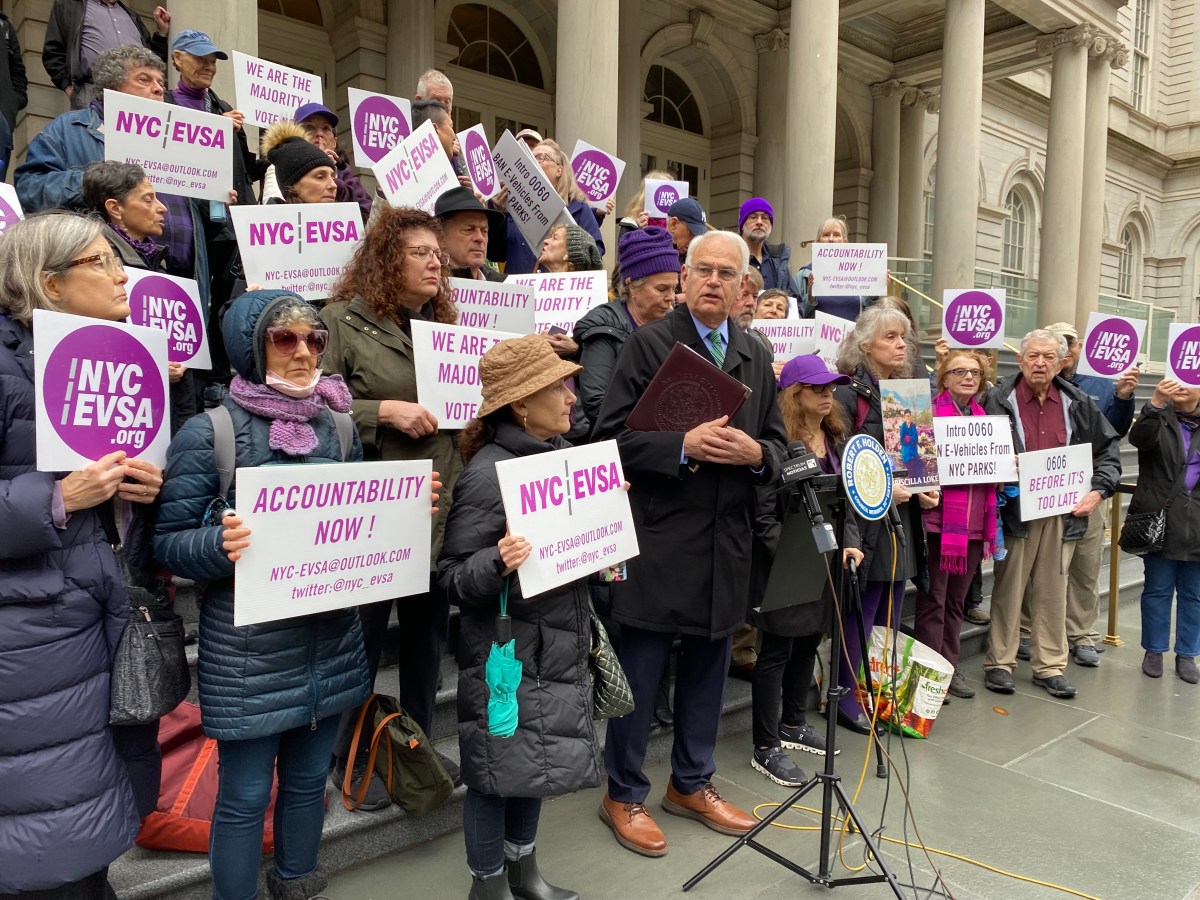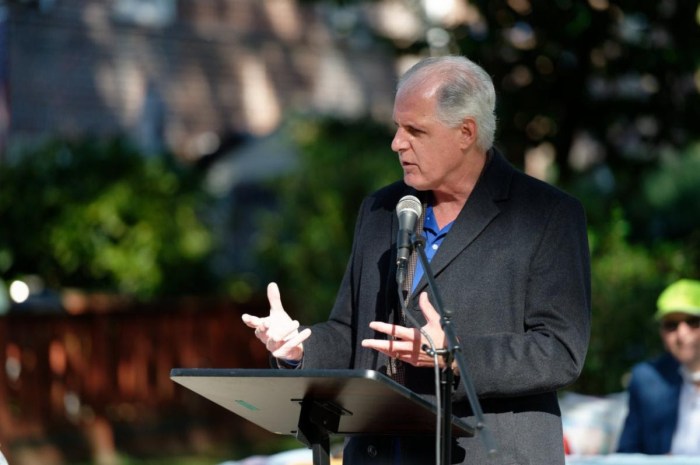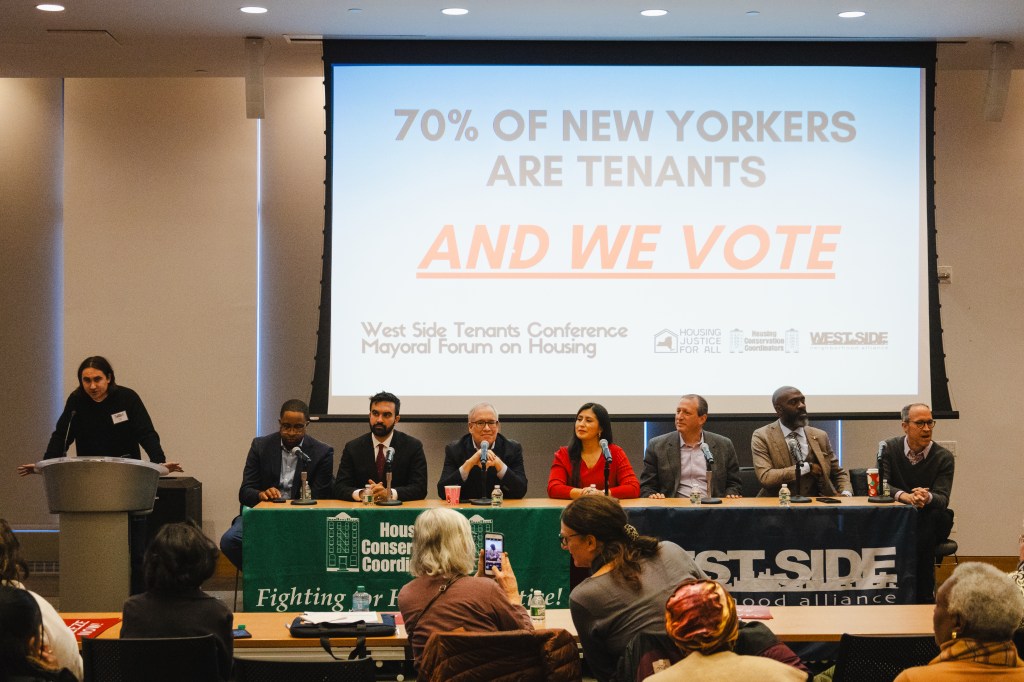By Alexander Dworkowitz
The city’s Olympic committee is revising its plans for the two lakes in Flushing Meadows Corona Park based on the findings of an environmental group hired to study the waters.
The Gaia Institute, a Bronx-based environmental non-profit, was given $50,000 to study Meadow and Willow Lakes in the Queens park by NYC2012, a non-profit group commissioned by Mayor Rudolph Giuliani to bring the summer Olympic games to the city in 2012.
NYC2012’s plan calls for more than $1.2 billion in capital improvements to facilities throughout the city. The work on the two lakes, expected to cost $230 million, is the most ambitious improvement in the plan.
If the Olympics were to take place in New York City, the two lakes would be combined into one lake, becoming a 2,000-meter regatta center designed for rowing and flat-water canoeing competitions.
NYC2012 hired Gaia to study the environmental problems posed by the lakes and suggest how the Olympic committee could solve them.
The report concluded that the lakes’ poor environmental state stems from the park’s original design, a similar finding of studies done in the past, said Dr. Paul Mankiewicz, executive director of Gaia.
Flushing Meadows Corona Park was originally marshland and later partly covered by ash heaps. City planner Robert Moses added a layer of topsoil above the marsh and built the park on top of the soil for the 1939 World’s Fair, which took place in the park. With the Grand Central Parkway built to the west of the lakes and the Van Wyck Expressway to the east, the lakes act as catch basins for pollutants from the cars and were designed more for decoration than actual use.
“It’s polluted because Robert Moses built a fresh water lake on top of the marsh,” said Mankiewicz.
When the marshland was covered, its natural tidal action was effectively eliminated. The marsh’s sediments, however, remained on the bottom of the lakes. The sediments attracted algae, which in turn depleted oxygen in the water and killed off natural habitats that need oxygen. As a result, the lakes are only home to half as many species of plants and animals as other lakes of the same size, the report found.
Like other studies beforehand, the report suggested dredging the sediment from the bottom of the lakes.
The dredging recommendation was in line with NYC2012’s plans. In order to allow for boating, the group wants to increase the average depth of the lakes from 4 feet to about 11 feet, which requires dredging.
But another recommendation was not in line with the NYC2012’s original plans.
Gaia’s report called for a fivefold increase in the marsh area surrounding the lakes to compensate for the increase in depth.
Gaia also suggested removing pipes that discharge highway runoff into the lake, adding an extra layer of soil underneath the lakes and reintroducing native plants to the lakes.
Jay Kriegel, executive director of NYC2012, said his group’s plan would follow Gaia’s recommendations, creating a large area of wetlands at the southwest corner of the new lake with a boardwalk elevated above the wetlands.
“NYC2012 enthusiastically endorses these recommendations and will incorporate them into our existing plan,” Kriegel said. “We are committed to creating an Olympic legacy in Flushing Meadows-Corona Park that will include a beautiful, restored, natural environment and recreational facilities that will be accessible to all.”
The plan to merge two lakes into one has not been happily received by many Queens civic leaders, however.
“I have lived three blocks from those lakes all my life,” said Patricia Dolan, vice president of the Queens Civic Congress. “I am not going to tell you it is pristine… If they want to go in there and dredge the lakes, I don’t have any problem with that. The problem is that how do you explain doubling the depth of the lakes.”
Dolan said earlier studies showed the lakes could be cleaned with a smaller amount of work and less impact on neighboring communities.
Kriegel, however, said the Olympic committee was the only group which proposed funding a cleanup of the lake.
“No one else has come up with a comprehensive plan at this time,” he said.
Reach reporter Alexander Dworkowitz by e-mail at Timesledger@aol.com or call 229-0300 Ext. 141.

































